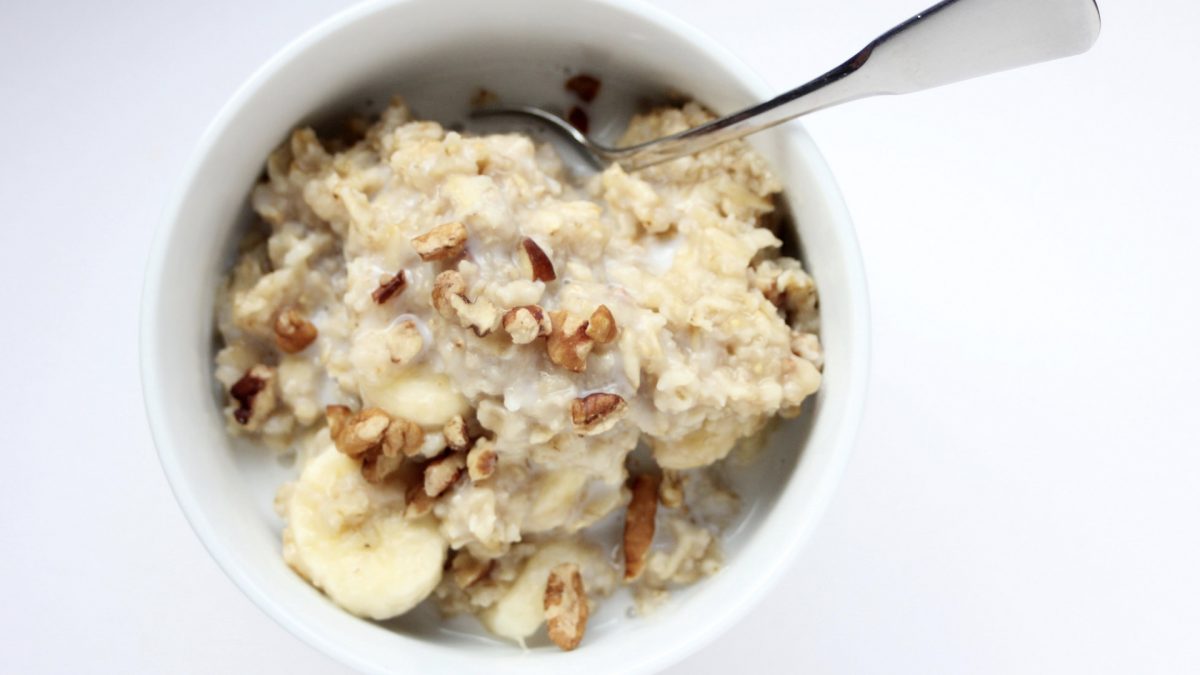Fiber continues to be singled out as a nutrient of public health concern. We’re getting only about half the minimum recommended intake on average. There is a fiber gap in America. Less than 3 percent meet the recommended minimum. This means that less than 3 percent of all Americans eat enough whole plant foods, the only place fiber is found in abundance. If even half of the adult population ate 3 more grams a day—a quarter cup of beans or a bowl of oatmeal—we could potentially save billions in medical costs. And that’s just for constipation! The consumption of plant foods, of fiber-containing foods, may reduce the risk for diabetes, heart disease, stroke, cancer, and obesity as well.
The first to make this link between fiber intake and killer disease was probably Dr. Hugh Trowell. He spent 30 years practicing medicine in Africa and suspected it was the Africans high consumption of corn, millet, sweet potatoes, greens, and beans that protected them from chronic disease. This twisted into the so-called “fiber hypothesis,” but Trowell didn’t think it was the fiber itself, but the high-fiber foods themselves that were protective. There are hundreds of different substances in whole plant foods besides fiber that may have beneficial effects. For example, the fiber in oatmeal can lower our blood cholesterol levels so that less gets stuck in our arteries, but there also are anti-inflammatory and antioxidant phytonutrients in oats that can prevent atherosclerotic build-up and then help maintain arterial function (see Can Oatmeal Reverse Heart Disease?).
Visionaries like Trowell were not entrapped by the reductionist “simple-minded” focus on dietary fiber and insisted that the whole plant foods should receive the emphasis. Fiber intake was just a marker for plant food intake. Those with the highest fiber intake and the lowest cholesterol were those whose who ate exclusively plant-based diets.
Risk factors like cholesterol are one thing, but can these individual foods actually affect the progression of heart disease, the #1 killer of Americans? We didn’t know until 2005. Hundreds of older women were subjected to coronary angiograms, where we inject dye into the coronary arteries of the heart to see how wide open they are. Each participant got an angiogram at the beginning of the study and one a few years later, all while researchers analyzed their diets. The arteries of women eating less than a serving of whole grains a day significantly narrowed, whereas the arteries of women who ate just a single serving or more also significantly narrowed, but they narrowed less. These were all women with heart disease eating the standard American diet; so, their arteries were progressively clogging shut. But, there was significantly less clogging in the women eating more whole grains, significantly less progression of their atherosclerosis. A similar slowing of their disease might be expected from taking cholesterol-lowering statin drugs. But, do we want to just slow the rate at which we die from heart disease, or do we want to not die from heart disease at all?
A strictly plant-based diet has been shown to reverse the progression of heart disease, opening arteries back up. Yes, whole grains, like drugs, can help counter the artery-clogging effects of the rest of the diet. Having oatmeal with bacon and eggs is better than just eating bacon and eggs, but why not stop eating an artery-clogging diet altogether?
Oatmeal offers a lot more than fiber, though. See Oatmeal Lotion for Chemotherapy-Induced Rash and Can Oatmeal Help Fatty Liver Disease?
Trowell’s work had a big influence on Dr. Denis Burkitt. See Dr. Burkitt’s F-Word Diet.
This reminds me of other interventions like hibiscus tea for high blood pressure (Hibiscus Tea vs. Plant-Based Diets for Hypertension) or amla for diabetes (Amla Versus Diabetes). Better to reverse the disease completely.
And, for an overview of how whole plant foods affect disease risks, be sure to check out the videos on our new Introduction page!
In health,
Michael Greger, M.D.
PS: If you haven’t yet, you can subscribe to my free videos here and watch my live, year-in-review presentations:
- 2012: Uprooting the Leading Causes of Death
- 2013: More Than an Apple a Day
- 2014: From Table to Able: Combating Disabling Diseases with Food
- 2015: Food as Medicine: Preventing and Treating the Most Dreaded Diseases with Diet
- 2016: How Not To Die: The Role of Diet in Preventing, Arresting, and Reversing Our Top 15 Killers
